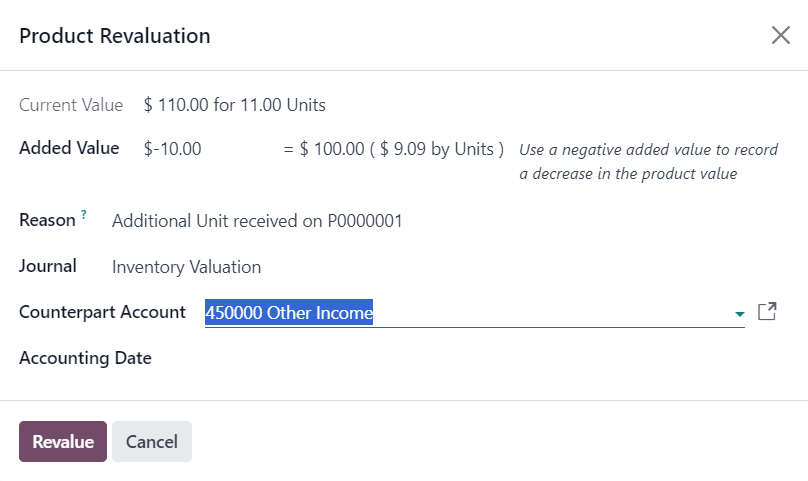So I'm using automatic inventory accounting FIFO method, though it was disabled and reenabled during the last updated to 16.3 saas, so there may be some weird side effects from that, but I believe I've cleaned all those up though, and these discrepancies were present before that.
Occasionally we get extra units that aren't billed, it's not common but happens. So there end up being credits to the interim inventory account and a debit to the inventory account for the nominal value of the extra units. So inventory value is increased and the interim account is decreased.
I'm not sure how to reconcile these, I could manually adjust the WH transaction amounts to match what was invoiced, but I think the inventory valuation will still be wrong, and CoG's will be wrong when the free units are sold.
Should I just transact these amount to an inventory shrinkage account?


Hi Nat,
Did you find a solution for this?
We buy rolls of material that are normally longer than purchased and Odoo wants to create liabilities for the addition materials that will never be billed.
Thanks in advance.
See my answer below